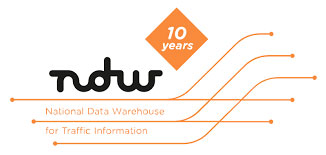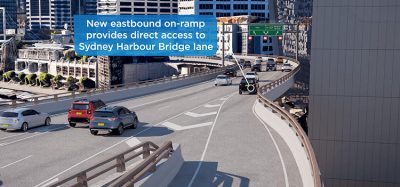Traffic management sensor innovations: the Dutch experience
- Like
- Digg
- Del
- Tumblr
- VKontakte
- Buffer
- Love This
- Odnoklassniki
- Meneame
- Blogger
- Amazon
- Yahoo Mail
- Gmail
- AOL
- Newsvine
- HackerNews
- Evernote
- MySpace
- Mail.ru
- Viadeo
- Line
- Comments
- Yummly
- SMS
- Viber
- Telegram
- Subscribe
- Skype
- Facebook Messenger
- Kakao
- LiveJournal
- Yammer
- Edgar
- Fintel
- Mix
- Instapaper
- Copy Link
Posted: 25 April 2018 | Scott Shepard - ARS Traffic & Transport Technology | 1 comment
Scott Shepard, Business Development Director, North America, ARS Traffic & Transport Technology (ARS T&TT) discusses the best practices in the assessment and replacement of traffic sensors for optimal traffic management, highlighting the Dutch National Data Warehouse (NDW) as a use case…


Given the impact of urbanisation, congestion, and road network complexity, the Netherlands is constantly innovating new methods to capture data for transport management. Applying the latest in sensoring technology (LiDAR, acoustic fibre, virtual loops, etc) lies at the heart of this innovation.
According to the Minister of Transport, Public Works, and Water Management, the Netherlands is the most densely populated country in the European Union and one of the most densely populated countries in the world. The Netherlands is also the sixth largest economy in Europe and is seen as the logistics gateway to Europe. Accessibility is therefore more than a basic function and mobility plays an integral role. As such, the Netherlands has a long tradition of technology innovations related to transport management, which has led to global thought leadership on the subject.
The Netherlands has one of the most advanced motorway networks in the world, with variable message signs and electronic signalisation across most of the network – as of 2004, 980km of motorway has been fitted with electronic traffic signalisation.
Traffic management and sensoring


Figure 1: Blue traffic Bluetooth sensor
Traffic management ensures the optimal performance of the road network and efficient handling of incidents. The necessities for adequate traffic management are the measuring and monitoring of the situation on the complete road network, analysing the data and taking action to reduce congestion and minimise incident response times. An effective, and often extensive, traffic surveillance and monitoring system is a pre-requisite for any intelligent traffic control system to keep track of prevailing conditions across the network. Consequently, a wide range of different sensors are installed in, on and above the roadway to obtain the necessary geographical and critical time coverage. These sensors include inductive loops, non-intrusive traffic detection devices, video cameras and video image processing.
Sensor replacement and data fusion


Figure 2: Traffic video sensor
ARS T&TT works with multiple traffic sensors, each of which has unique characteristics, allowing us to determine which sensor type or combination of types is most suitable for meeting customer needs and achieving the best results. For instance, Bluetooth, GPS, loops and radar are suitable sensors for analysing speed, travel time and traffic intensities. Currently, the blue traffic sensor, as illustrated in Figure 1, the traffic video sensor (ANPR, ADR) as illustrated in Figure 2, loop detector, as displayed in Figure 3, virtual loop detector, GPS sensor, radar detector, floating car data and third-party data are all used as sources for the traffic data. Third-party weather forecasts and information on school and public holidays are used, along with traffic sensor data, to generate accurate travel time predictions.
Sensor replacement facts and figures


Figure 3: Loop detector system
In support of Dutch transport management innovation, traffic sensor assessment, calibration, replacement and/or upgrading has been conducted nationwide over the past decade. Figure 4 shows a sensor replacement diagram and below is a sample of some traffic sensor replacement projects, including details of location and scale:
- Ministry of Justice, Traffic Bureau – 400-450 automatic traffic counters (loops) were taken over by ARS T&TT, upgrading all locations to become standalone (powered through solar panels and over-the-air communication)
- ANPR License Plate camera sensors in Rotterdam – around 270 new ANPR cameras replaced the existing camera network
- Loop counters in the Flevoland province – around 70 LDS devices replaced the pre-existing legacy loops
- Loop counters in the Noord Holland province – around 230 LDS loops replaced legacy loops
- Loop counters in the city of Rotterdam – around 200 LDS loops replaced legacy loops
- The Noord Brabant province, FLOW, is gradually phasing out loops and replacing them with radar when induction loops are defective in 68 permanent locations and 110 periodical ones.
Dutch National Data Warehouse (NDW) use case


Online data services for NDW include traffic intensities, vehicle classification, speeds, and estimated and realised travel times. NDW covers nearly 10,000km of Dutch highways, national roads and urban roads.
The data from NDW is distributed to all traffic information service providers and major road operators in the Netherlands. The data warehouse is hosted at a Tier 4 data centre which is nearly 100 per cent available and redundant, avoiding single points of failures. The time series of traffic data from the various traffic monitoring sources are input to the traffic data warehouse, containing a database with historical and real-time traffic information. From this dataset, high-quality traffic information and forecasts are derived by filtering and data fusion algorithms. Results are applied in traffic information, traffic management and traffic engineering domains.
Latest sensor technologies


Figure 4: Sensor replacement diagram
Effective Dutch transport management always calls for the latest sensor technologies to be explored and utilised. One of the latest types being considered for roadside usage is optical fibre.
Optical fibre sensors are used in two ways: to detect pressure (load) and to detect vibration. In the Netherlands, vehicle classification is mainly based on length in combination with the vehicle profiles. This means that sensors that measure wheel passages are not of much interest for monitoring motor vehicles, apart for temporary measurements.
Using optical fibres to measure vibrations is a well-established technology but is not currently being applied for vehicle detection. Presently, an experiment is being performed along a Dutch roadway, where some optical fibres are used to estimate the longitudinal frequency distribution along the road. The hypothesis is that a relative high fraction of low frequencies is an indication of slow driving traffic. The advantage is that such sensors can be installed alongside roads and that they are well protected against adverse weather, which results in low maintenance costs.
Conclusion
Traffic sensors currently deployed in the Netherlands comprise the most advanced technology the world has to offer today. A pre-requisite for road network operations is the collection of accurate traffic data that defines the status of the road network, the traffic conditions that prevail and information about roadway conditions and immediate environment. Data on traffic and weather conditions, incidents and other road and highway status alerts is used to provide intelligence for network operations activities, traffic control and information systems. This process of gathering data is called network monitoring and is reliant on accurate and effective traffic sensors to capture, transmit and plan operational activities and, in turn, the degree of management and control that is possible. It ultimately determines the quality of information that is available to travellers and road users for transport management functions, on a nationwide scale.
Biography


Related topics
Traffic Management
Related organisations
ARS Traffic & Transport Technology
Related people
Scott Shepard









Hi Scott – do you know if there is a possibility that the system (i.e. hardware, software) can be purchased so that other countries/cities can benefit from this technology? I am from Manila — a city with one of the worst traffic in Asia. We’re looking for innovative solution how we can solve the growing traffic congestion in the city.